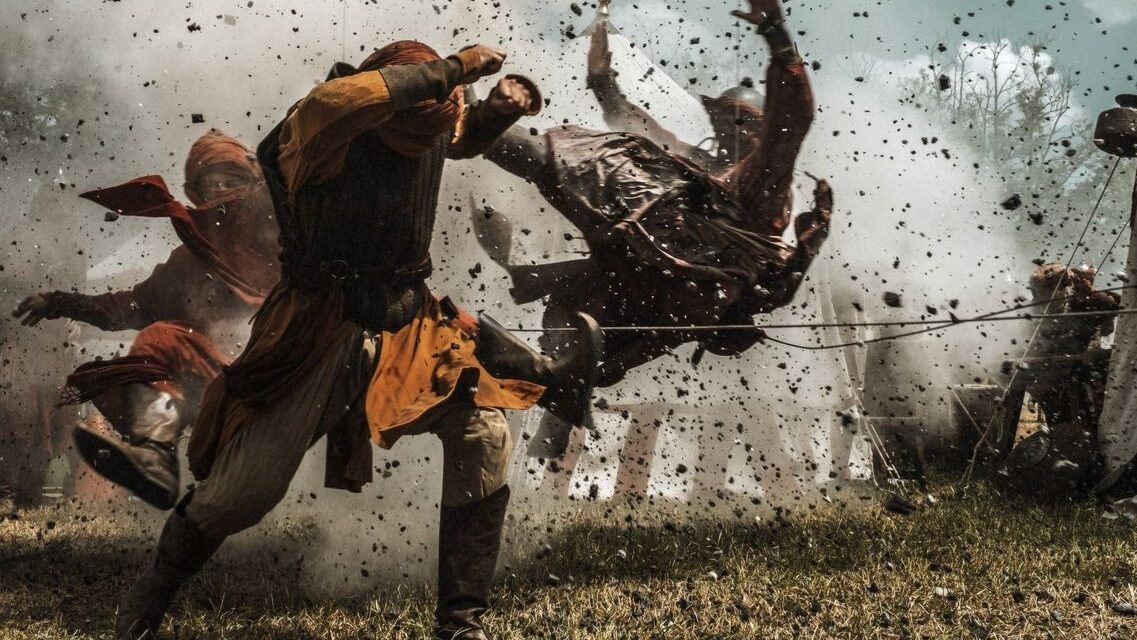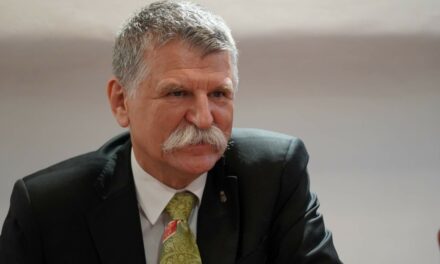The question is not what Romanians think of a particular Hungarian cultural work, but what we think of ourselves. Written by Attila Zsolt Borbély.
Survival and growth are the basic goals of every healthy national community, stemming from its existence. On the other hand, few people emphasize that the primary national political goal is not to retain the Hungarian-speaking population, but to create a Hungarian-feeling, Hungarian-thinking national community that is closely linked to Hungarian culture and history, among which it is evident that the globalist even in headwinds, he passes on his values to the younger generations. In this regard, education policy and political communication are not enough, we need all available tools. First of all, to regulate social platforms and streaming services, since
what an absurd situation it is when the destructive propaganda of the globalist world power on Facebook, YouTube, Netflix, etc. slowly exerts a greater influence on the intellectual development of new generations than parents and the educational institution system combined!
And, of course, attention must also be paid to the traditional means of influencing consciousness, book publishing, book distribution, library supply, the world of theater and, of course, the film industry. Yes, the latter is a difficult genre, as is the entire cultural sphere.
The Márk Lakatos case (let's briefly call the scandal involving an increasing number of perpetrators) shines like a ray of light into the basement, how the cosmopolitan, value-destroying cultural mafia that has spanned the ages felt untouchable even after nearly a decade and a half of national governance. And one can only hope that the use of the past tense is not incorrect, that the purification that has begun will not remain a superficial phenomenon.
And not only did this cultural clique feel untouchable, but, as several people on the right pointed out, also persistent. In English:
in many cases, the government financed its own enemies, from the music industry to the film industry, while at least two or three national epics were not made every year. Although Hungarian history and literature offer so many topics for these.
What a movie could be made from Wass Albert's seminal work, Sword and Scythe, covering a thousand years of Hungarian history! Or from Dezső Szabó's almost forgotten novel, Help!, from Cécile Bujdosó Tormay's book, or from József Nyirő's masterpiece, The Bison from Sibo. We could list a long list of works that would like to be made into a film. There were encouraging developments in the field of community self-awareness, but we can state that this was not the most successful sector of the government, which otherwise performed better than ever since the regime change from a national strategic point of view.
Now the Hunyadi series, which we have been waiting for a long time, is finally about to be presented. Based on the film trailer and the information that has been made public, we know for sure that this was a completely different kind of work than the one that was successfully torpedoed by the national press in the 2018/19 round, when the domestic Ballib cultural elite would have used the Hunyadi myth, moreover, with public money.
The reception of the Hunyadi series, which debuted in Cannes last month and will be presented at the beginning of next year, can be predicted, unfortunately the media response caused by national films typically follows the logic of the expert camp. But this time, not only the anti-national, self-proclaimed Hungarian forces will rise up, but the Romanian grumbling has already begun. This topic came to the attention of the Hungarian public through Matei Blanaru's chauvinistic, slanderous October pamphlet, disguised as an analysis, entitled A film about János Hunyadi, Hungarian "soft power" and Viktor Orbán's dream, published in the daily newspaper Adevarul, although the newspaper and dozens of other portals From Ziar.com to Stiridinsurse.ro, through Correct-news.ro to Cinemagia.ro, already in September he covered the with a question in a similar tone, of course in less detail.
We are not surprised, we are used to it
the stratum of Romanians that shape culture and public thinking - with the exception of a handful of intellectuals who are willing to face the actual national past - turn a blind eye to reality, and consider the entire historical branch, from research to popularizing literature and specialist journals to education, as a weapon that was seized after the First World War to preserve territories and to maintain the level of anti-Hungarianism among Romanians.
For this, the historical hypothesis also needs the phantasmagoria of the weak Daco-Romanian theory, the main point of which is that Romanians have been living in their accommodation for more than two thousand years, and Hungarians are just intruders. This requires Voivode Mihály, who, according to them, united the "Romanian countries", this requires the mythology built around the inconclusive Gyulafehérvár People's Assembly of 1918, the hero cult of the mass murderers who massacred thousands of Hungarians. Also, this requires the denial of Hungarian merits and the presentation of Hungarian historical figures, the Hunyadiaks, Pál Kinizsi, György Dózsa or Sándor Csoma Kőrösi, as Romanians.
In the relevant Ultrahang Plus podcast by writer Tamás Pataki and historian Artúr Köő (https://www.youtube.com/watch?v=YuWG8U8FLQM), it is rightly raised that in the old Romanian sources, Transylvania is called "Țara Ungurească", i.e. Hungary, and also what caught the eye of many of us already in the early eighties, when it was mandatory to memorize the Romanians' number one folk ballad, which was not at all short, the Miorița, that in it the Transylvanian shepherd was called "Ungurean", i.e. Hungarian. But it is just as unnecessary to look for logic in the Romanians' public thinking, historical reasoning, and inter-ethnic political line, as it is in the often self-contradictory woke propaganda.
A legitimate question is how the Hungarian politician should react to this. It is worth splitting the problem into two. On the Bucharest front, the Hungarian representation of interests in Transylvania collides its position with the Romanian superior force, under amazingly unequal conditions, and if the question is raised in this institutional framework, it is good to have a set of arguments in advance. However, the experience is that
while between the two world wars the prominent members of the National Hungarian Party had serious historical debates with the Romanian representatives who attacked them, the RMDSZ did not take up the gloves, avoiding polemics by leaving historical questions to historians. This was obviously the easier solution, in all respects.
It does not require extra work, in-depth study, or courage, and at the same time, it does not generate conflicts or complicate "hand-to-hand" deals. On the other hand, it demotivates the part of the voter base that follows Romanian public life.
As far as Inner Hungary is concerned, it would be good to have a purposeful World Wide Web strategy that focuses on historical reality and affects Wikipedia, YouTube and other platforms. Hundreds of thousands of Transylvanian Hungarians live here, and another million in Transylvania, whose knowledge of the Romanian language is not sufficiently utilized by Hungarian national politics. The fact that Transylvanian Hungarians know Romanian, while Romanians do not, is a disaster in the case of mixed marriages, but it can be a significant advantage and a huge asset in the exercise of the "soft power" mentioned by Matei Blanaru. It would obviously be a mistake to deal with the ahistorical and absurd Romanian proposals on a diplomatic level. In any case, until we are addressed directly, it is better not to be aware of this specific phenomenon.
The question is not what Romanians think of a particular Hungarian cultural work, but what we think of ourselves. The internal enemy is dangerous precisely because it directly attacks the national immune system, our historical self-image, our sense of continuity.
He wants to tell us who can get a statue and who can't, who can have a public square named after him and who can't, who we should respect and who we should despise, whose works we should study and whose we shouldn't. This battle must be fought, and attention must also be paid to this battle, if we strive to have a self-conscious Hungarian people still living here, in the embrace of the Carpathians, in another thousand years.
Featured image: Hungarian Motion Picture Festival / Facebook













